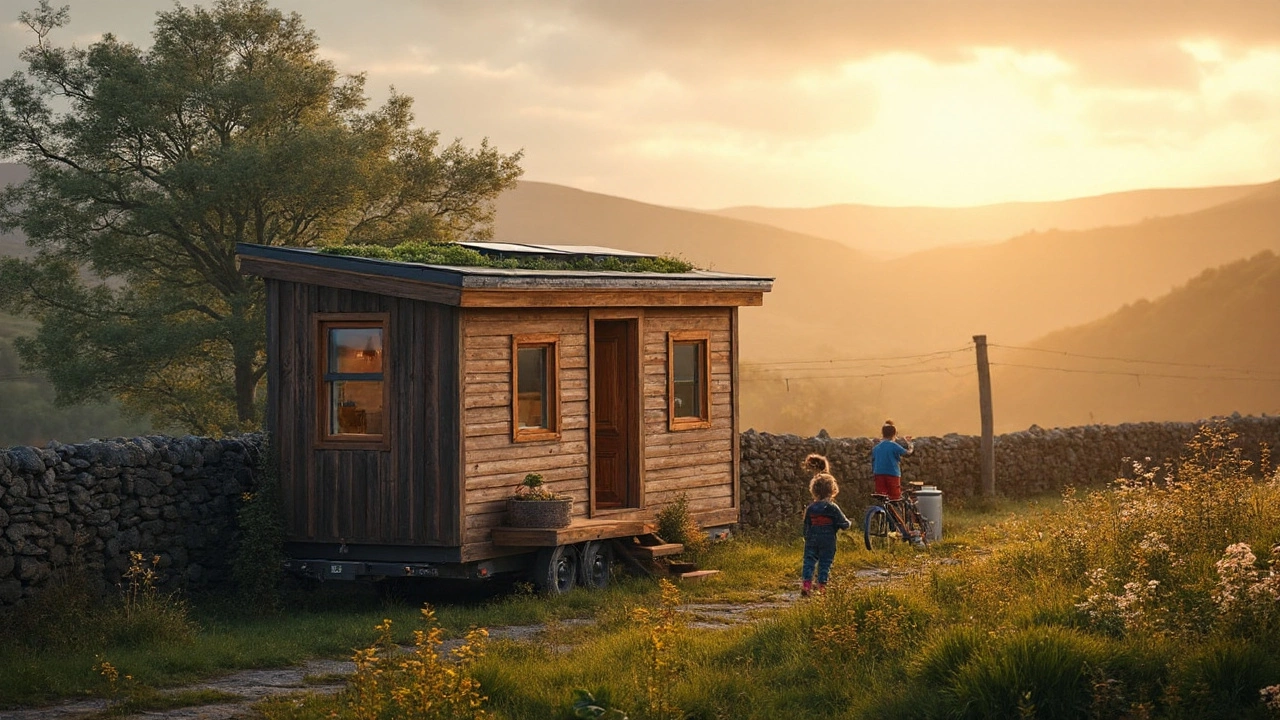Off-Grid Living Made Simple: Tips, Tiny Homes, and Eco Ideas
Ever wondered how people enjoy life without a monthly electricity bill? Going off‑grid isn’t a fantasy; it’s a set of choices you can make step by step. Below you’ll find the basics you need to start living free from the grid, whether you’re eyeing a tiny house, a yurt, or a renovated cottage.
Pick the Right Spot and Build Smart
The first decision is where you’ll live. Look for land with good sunlight, decent wind, and a reliable water source. A sunny hill can power solar panels, while a gentle stream can feed a rain‑catching system. Keep zoning rules in mind – many rural areas allow tiny houses on wheels, but some counties require a permanent foundation.
When you choose a building type, match it to your land. Tiny houses on wheels are cheap to move and often need fewer permits. Yurts are quick to erect and use natural materials, making them a good fit for steep terrain. Traditional stone cottages work well on flat sites with good drainage.
Power, Water, and Waste – The Three Essentials
Solar panels are the most common off‑grid power source. A 3‑kW system can run lights, a fridge, and a laptop for a couple of people. Pair it with a battery bank to store energy for cloudy days. If your site gets steady wind, a small turbine can top up the batteries.
Water can come from rain barrels, a well, or a nearby spring. Install a simple filter and a UV sterilizer to keep it safe for drinking. Reusing grey water for garden irrigation cuts down on waste and gives your plants a boost.
For waste, composting toilets are a low‑maintenance option. They turn human waste into safe compost for non‑food plants. If you prefer a flush system, a tiny septic tank works as long as you’re not on a protected waterway.
Don’t forget heating and cooling. A wood stove provides warmth in winter and can double as a cooking spot. In summer, natural ventilation, shading, and a breathable building envelope keep indoor temps comfortable without a compressor.
Budget matters too. Start with the basics – a small solar kit, a rainwater barrel, and a modest shelter. Add upgrades like a larger battery or a better water filter as you go. Because you control each component, you can spread costs over time and avoid a huge upfront hit.
Living off‑grid also means becoming a bit more self‑reliant. Grow a garden, keep a few chickens, and learn simple repairs. The effort pays off with fresh food, lower bills, and a deeper connection to your surroundings.
If you’re not ready to quit the grid completely, try a hybrid approach. Keep a connection for high‑energy appliances while powering daily needs with solar. This gives you a safety net while you test the lifestyle.
Finally, join online forums or local meet‑ups. Other off‑grid families love sharing tips on panel placement, battery choices, and DIY projects. Their experience can save you time and prevent costly mistakes.
Off‑grid living is about taking control, one decision at a time. Pick a site, choose a simple shelter, set up power, water, and waste, then enjoy the freedom of a lifestyle that runs on your own terms.
How Tiny Houses Are Eco‑Friendly: Energy, Materials, and Real Numbers (2025)
Tiny houses cut energy, materials, water, and waste. See the numbers, design steps, and checks that actually make a tiny home eco-friendly in 2025.
- Sep, 16 2025
- 0 Comments
